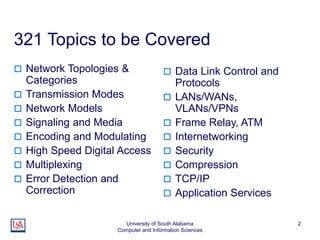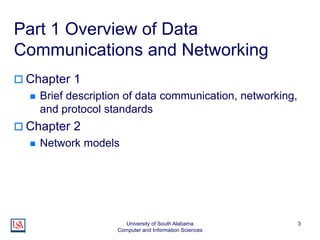This document provides an overview of the topics to be covered in a data communications and networking course. The course will cover network topologies, transmission modes, network models, signaling, encoding, multiplexing, error detection, data link protocols, LANs/WANs, internetworking, security, compression, TCP/IP, and application services. It defines key terms like data communication, networks, protocols, standards, and the Internet. The first two chapters will provide an introduction to the topics and discuss network models.





















